Werewolf By Night #1
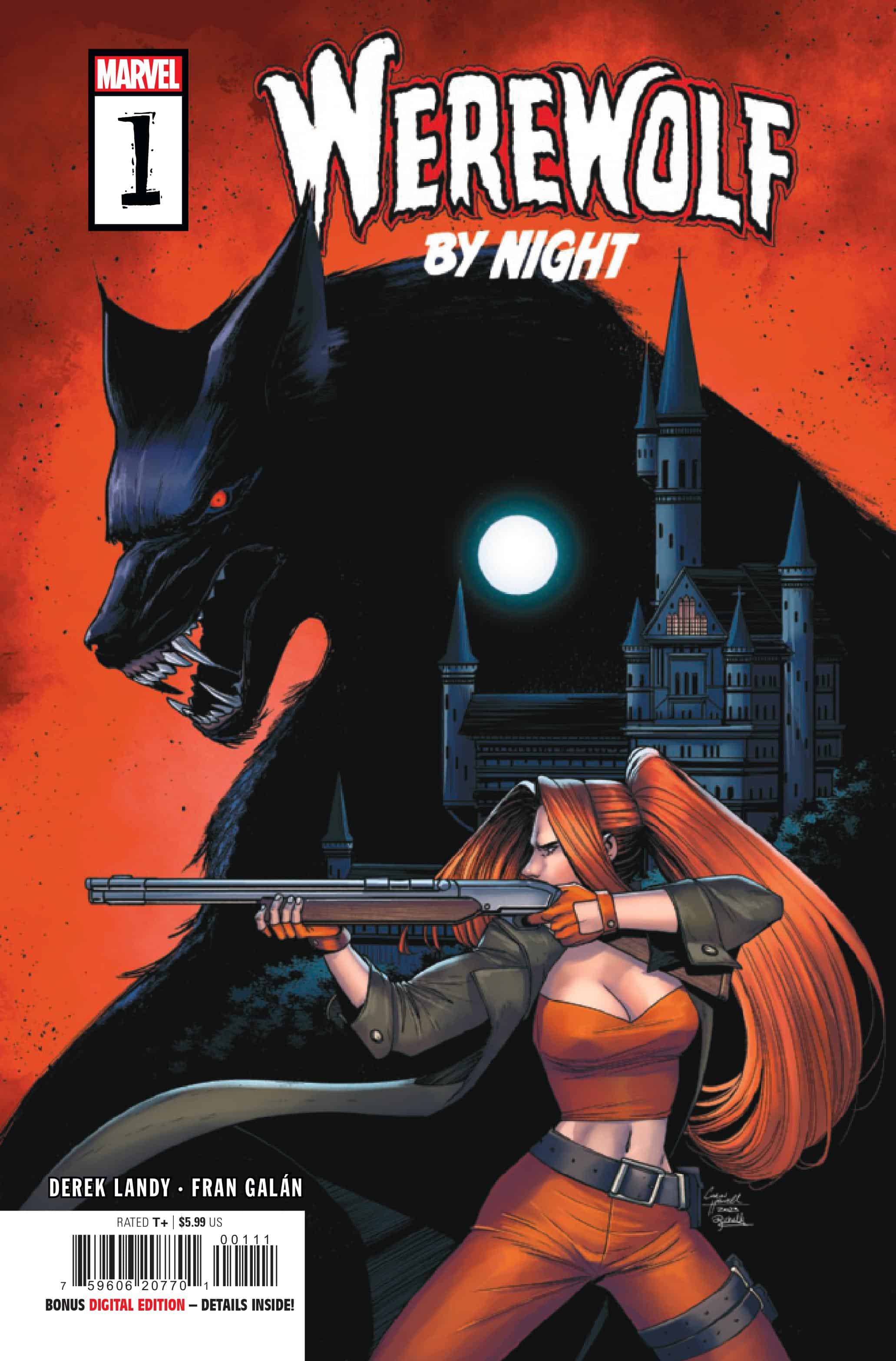
Recap
AN UNHOLY ALLIANCE! In the shadows of black-and-white night, Jack Russell races to halt the sacrifice of a young girl at the hands of monsters. Elsa Bloodstone, in all her colorful monster-hunting glory, isn’t far behind. But can they put their differences aside long enough to save the day? And what would such a partnership even look like?
Review
Werewolf By Night #1 – written by Derek Landy with art and colors by Fran Galán and letters by VC’s Joe Sabino – provides an excellent snapshot of the monstrous side of the Marvel universe, as Jack Russel, the titular werewolf (aka the current King of Wolves), teams up with famed monster hunter Elsa Bloodstone to rescue a young woman kidnapped by an evil mage. The two fight their way through a classic monster movie castle that’s been transplanted to the Rocky Mountains before facing an eldritch being.
The book flips between the two leads and their perspectives, shifting from a black-and-white style to a book filled with lush color, echoing the aesthetic elements of the Disney+ special presentation that inspired this one-shot. Werewolf by Night’s section is black and white and starts with him on the hunt, building on his role last seen in a previous Moon Knight Annual. Elsa’s story is in color, and she saunters in with the typical swagger that comes with the powers of her ancestral bloodstone.
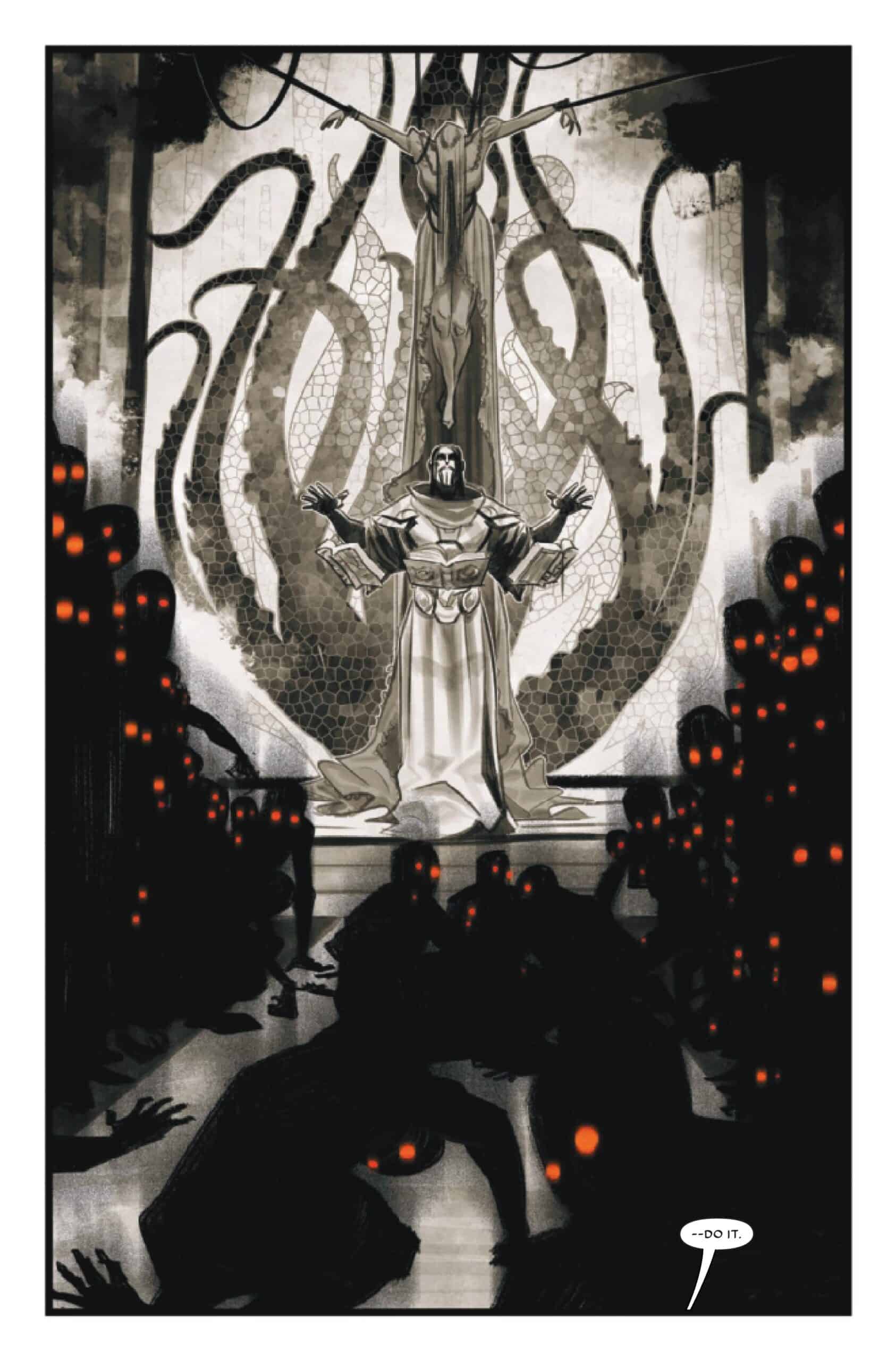
To avoid spoilers, the book offers some genuine twists and turns that ensure the plot is not easily guessed and hides an antagonist that appears in the book’s back half. The story and conflict are essential, but the real driving force of this issue is the team-up dynamic of Jack and Elsa and the clashing of personalities that comes from characters having a history.
Landy’s script is a healthy mix of external action and internal musings, as the book is equally interested in the larger plot and the personal reactions/emotions of its buddy leads. The narration is rough initially (pun intended) but eventually finds its footing once Bloodstone is introduced. The opening stretch of Russell’s running narration feels flat, having to provide the opening bit of exposition to set the stage for the issue. Bloodstone’s introduction gets the advantage of coming second and allows Landy to drop her right into the plot (quite literally).
Once the running captions find a solid rhythm, they vastly improve, and Landy even gets to put these into conversation with one another. The two sides of the circumstances of the issue make for a dynamic read, and the dual lead structure becomes evident thanks to this approach. The narrations also make clear the messy history these characters share and signal to the reader that these characters are both holding walls up that lend a sense of ships passing in the night. It gives the book a classic sense of yearning romance that shows how Jack and Elsa could easily slip into old patterns, but the two have made some sense of growth.
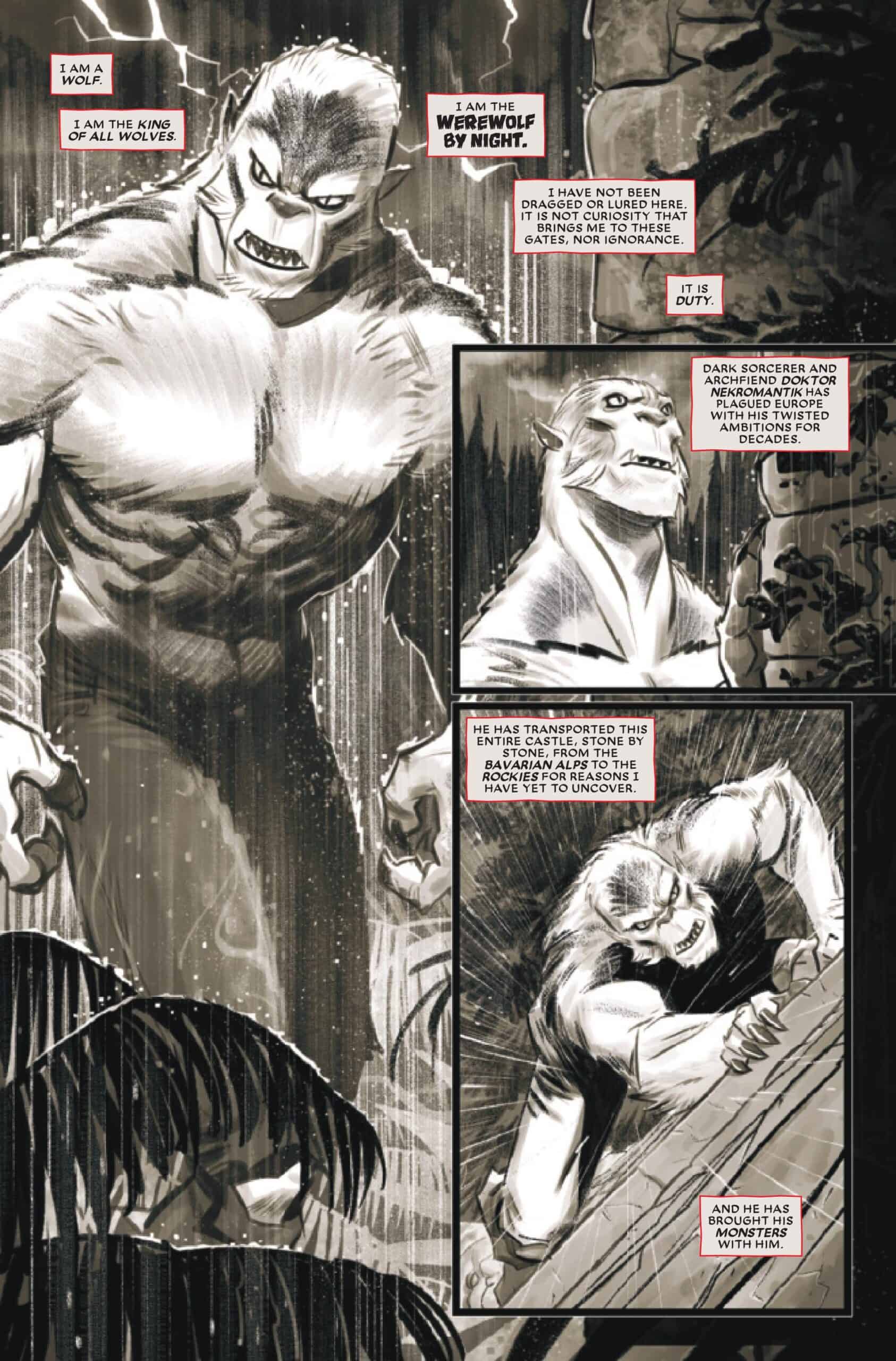
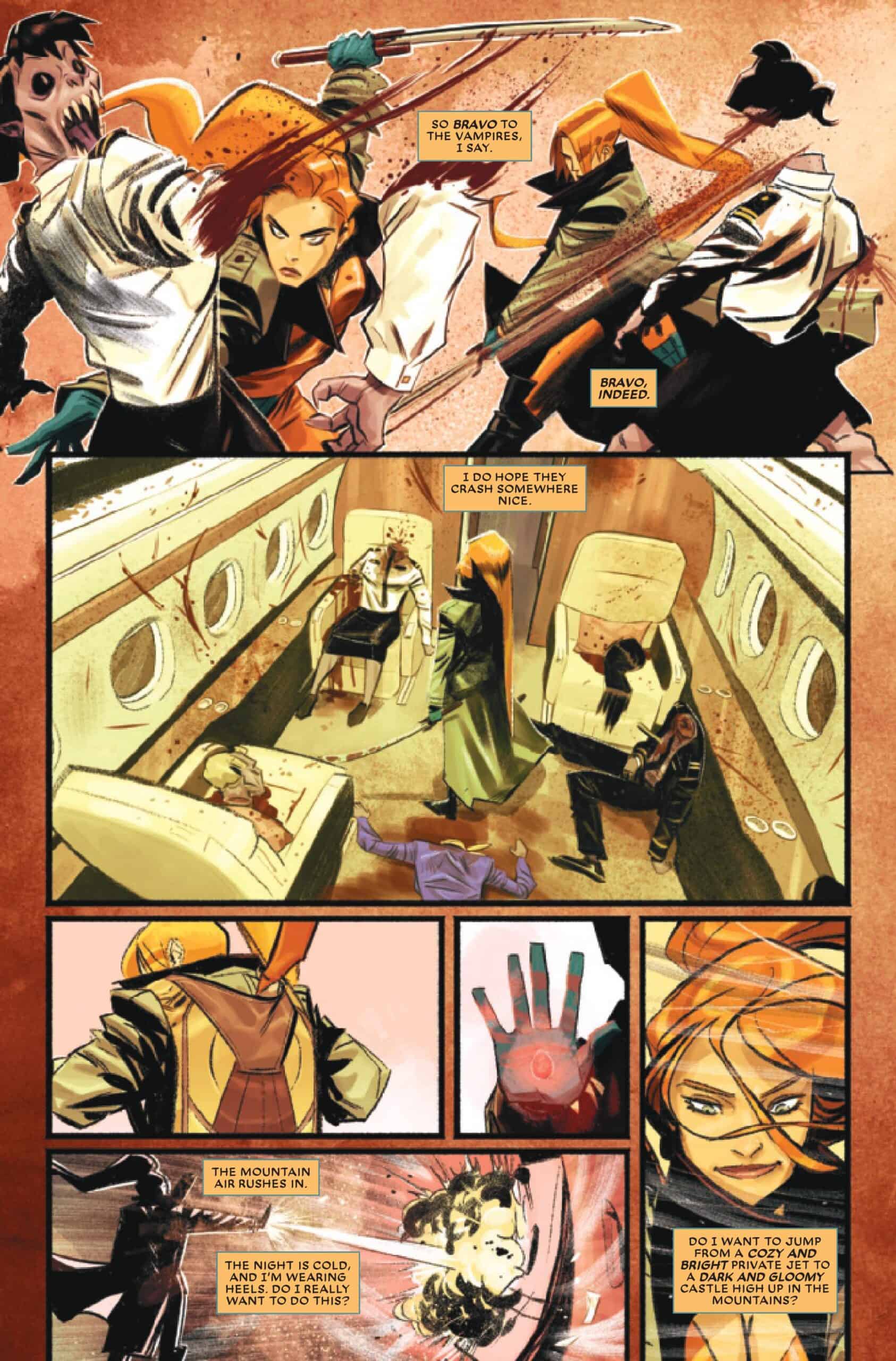
Just as the characters evolve and grow over the last few years, so does the plot, which moves away from a straightforward evil sorcerer’s ritual, instead playing on the villain’s hubris to deliver a second-act twist. Landy roots the story in specific characterization to lay the track for the subversion of expectations and clarifies that this book evokes a classic storytelling style. However, that doesn’t mean it has to fall into the trappings of a traditional structure.
Not only does Landy weave these disparate elements into something that works as a cohesive story, but Galán interweaves the use of color and monochrome to create a fascinating look for the book. The issue starts with separate pages that either employ the color in Elsa’s instances or the black and white for Werewolf By Night, but quickly, those blur as the characters run into one another. That collision allows Galán to mix the coloring and stark tones across the issue, deploying bits of color for Elsa in pages otherwise lacking in a palette.
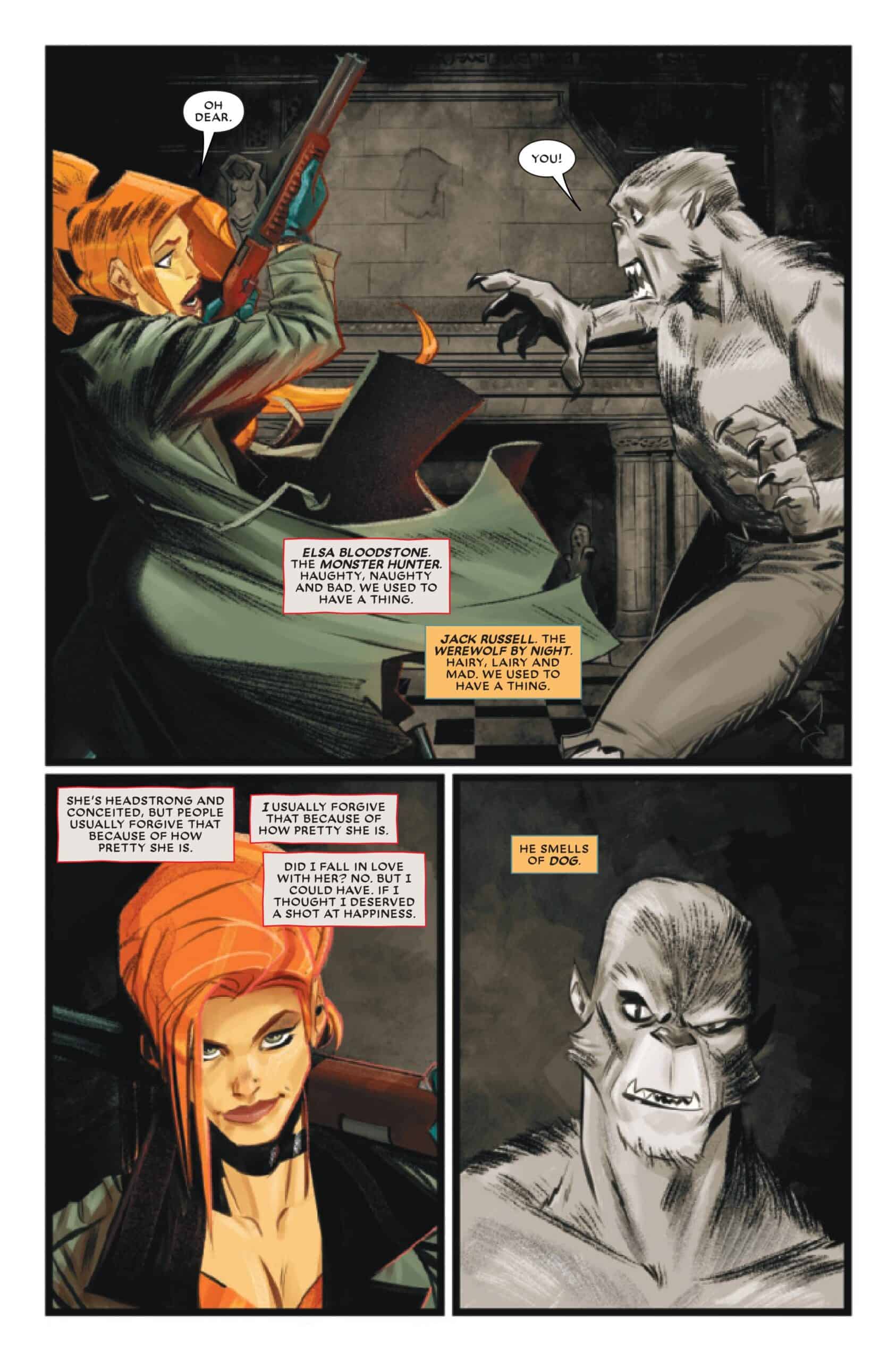
The lack and use of color feel very intentional on the page, and that’s evident in the art page by page, which understands and plays with the action beats in both instances. The action is hyperkinetic as Galán plays with anatomy, utilizing a style of linework that sells movement through the elasticity of anatomy. Both characters move in a way that’s not human (thanks to werewolf/magical stone enhancements). The action is compelling on the page, but the real strength of the art is in how Galán can compose an expression.
The sense of longing and need is palpable on the page whenever Russel and Bloodstone share a panel. The dynamic feels like a synergistic move from the parent company, but Galán’s work bypasses that cynical expectation by reinforcing the story’s heart. Even as crazy designs for elder gods and twisted monsters fill the ages, nothing is illustrated with such conviction as the small, passing glances shared between the leads. The coloring makes a literal case for these characters being in separate places in their lives and adds a distance that reinforces the dramatic tension of the issue.
Final Thoughts
The power of Werewolf By Night #1 is the way the book pivots from MCU tie-in to a sharp, poignant tale of lost love and the danger of backsliding into what’s comfortable. The book thrives in the dueling elements of the narration and coloring, operating on two levels to reflect the rift between former lovers and current business acquaintances. The alternating captions are made to be a clear, distinct snapshot into the dual leads and the coloring creates two visual styles that achieve the expressive, kinetic forward art. The book is an instant buy for fans of the two leads, or those searching for a short, bittersweet glimpse into some of the lesser-known, mystical characters of the Marvel Universe.
Werewolf By Night #1: They Just Need A Good Ol’ Monster Mash
- Writing - 8/108/10
- Storyline - 8/108/10
- Art - 9/109/10
- Color - 9/109/10
- Cover Art - 9/109/10





